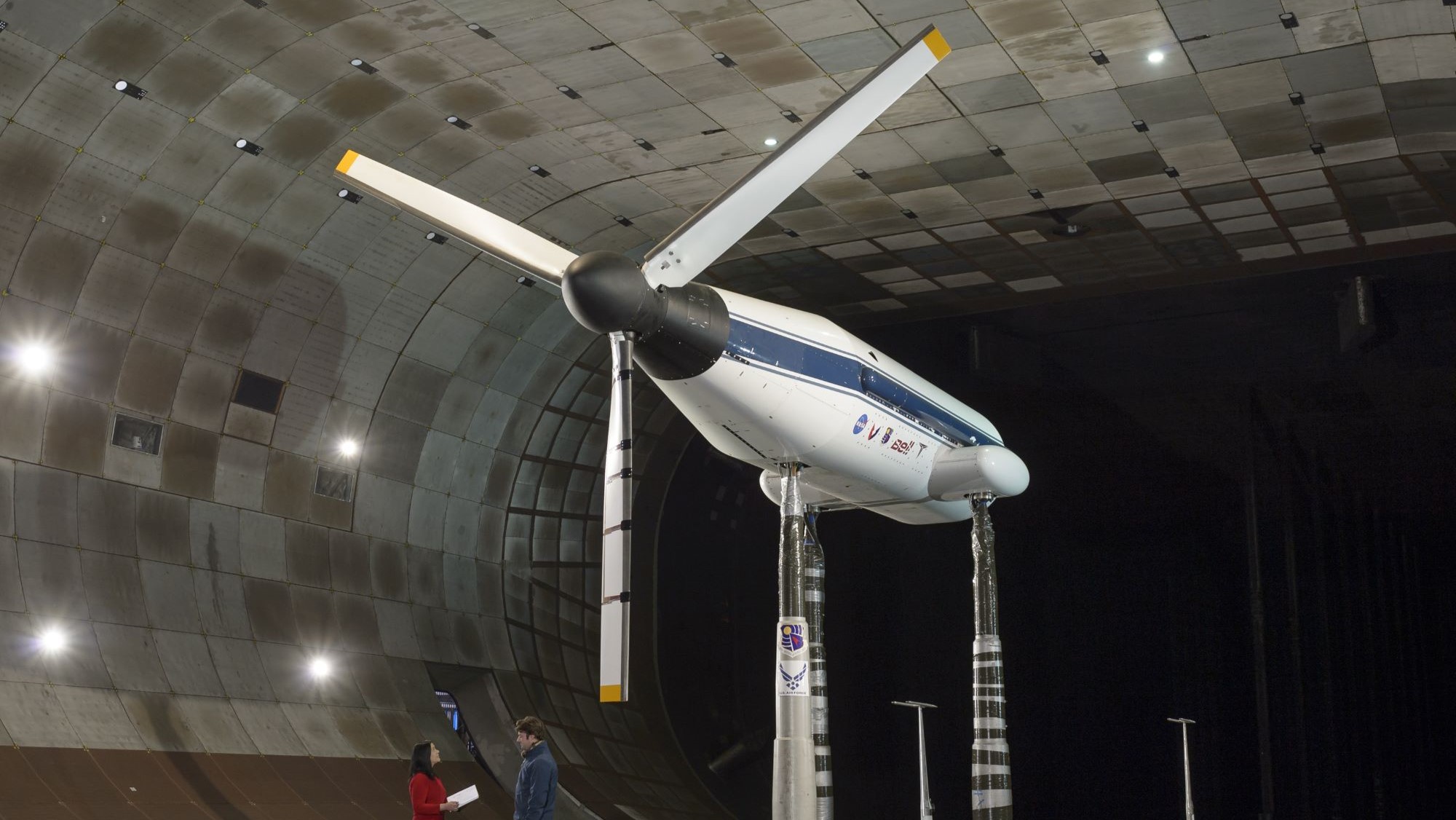

Before a spacecraft lands on Mars, or futuristic cargo planes soar above our cities, they have to be designed and rigorously tested in wind tunnels. Even passenger airliners, such as Boeing’s 747 jets used by major airlines, are subject to such tests. These facilities allow engineers to “fly” aircraft and spacecraft just a few feet off the ground. NASA, which has a 100-year history of using the machines, is finally building a new one, updated for the 21st century—the agency’s first new wind tunnel in over 40 years.
The NASA Flight Dynamic Research Facility (FDRF), slated to open in 2025 at the Langley Research Center in Virginia, will be over 100 feet tall. NASA leaders think it’s going to be key for creating the spacecraft of the future. The agency plans to use the new wind tunnel to prepare for human spaceflight to the Moon and Mars, plus robotic missions to two solar system worlds with thick atmospheres: Venus and Titan, Saturn’s methane-rich moon. It will also be key for the next generation of Earth-bound aircraft, which NASA hopes to make more sustainable, in line with its goal of net-zero emissions by 2050.
“What we’re going to do with this facility is literally change the world,” said Clayton Turner, director of NASA Langley Research Center, in a press release from the facility’s groundbreaking ceremony. “The humble spirit of our researchers and this effort will allow us to reach for new heights, to reveal the unknown, for the betterment of humankind.”

Wind tunnels push air past a stationary object, usually using huge fans, to simulate the motion of air around, over, and under flying craft. This allows engineers to tweak their designs based on what they see in the experiment, making vehicles more stable and aerodynamic. The wind tunnel is a safe place to try out new technologies, and a key step in testing the safety of any craft before a human jumps aboard. It’s also key for rockets and spacecraft, where engineers must ensure the vehicle can safely traverse a planet’s atmosphere. (Biologists have even used wind tunnels—though not NASA’s—to observe flying geese.)
Langley’s most recently built wind tunnel is the National Transonic Facility, constructed in 1980. That will remain in operation, but the FDRF will replace two existing wind tunnels, both near 80 years old: the 12-foot Low-Speed Spin Tunnel from 1939, and the 20-foot Vertical Spin Tunnel from 1940. The flying machines tested in the new facility will be beyond what the original builders could have dreamed. “We haven’t tested anything with a propeller on it in decades,” joked NASA Langley chief engineer Charles “Mike” Fremaux at a recent community lecture about the project.
[Related: How to build a massive wind farm]
The first NASA wind tunnel (which was the US government’s first wind tunnel) was built all the way back in 1921 at Langley. It was basically a glorified box with some powerful fans. Since then, the agency has built more than 40 wind tunnels, many with specialized purposes. Some are tiny, meant only for miniature models, and some are large enough to fit a whole jet. Each produces a different temperature, pressure, and speed of wind, meant to simulate the different conditions a craft might encounter in the real world. Some wind tunnels can move air at over 4,000 miles per hour, significantly quicker than a 747’s usual cruising speed of around 600 mph.
Many famous missions have started their journeys in a wind tunnel. The Curiosity rover’s parachute, for example, was first tested in the National Full-Scale Aerodynamics Complex at NASA Ames in California, long before it ballooned open in the Red Planet’s atmosphere. In the past few years, key parts of NASA’s Artemis missions, which aim to return Americans to the moon, including the Orion crew capsule and the SLS rocket, were tested in wind tunnels.

The new wind tunnel at the FDRF will be more efficient than past facilities, cutting down on costs. Plus, it’ll be safer for the staff running the wind tunnel tests, who used to run the risk of getting sucked into the machine as they deployed models. “Just like we do now…a very skilled technician is going to launch the models by hand. That’s not a joke,” said Fremaux in his presentation. In the past, there have only been some minor injuries, and most accidents just damage the facility itself. But, now there will be more fail-safes to minimize the risks.
It really might even pave the way for flying cars, too, by testing the tech for vertical takeoff, as demonstrated by Back to the Future’s hover cars or a classic Jetsons’-style flying car. Those are far-out ideas, but they’d never be able to take off without the help of the time-tested wind tunnel.
